Why is there a stuffed toy hanging from the car bumper?
The odd origins of today's popular car modifications
By Inigo Roces
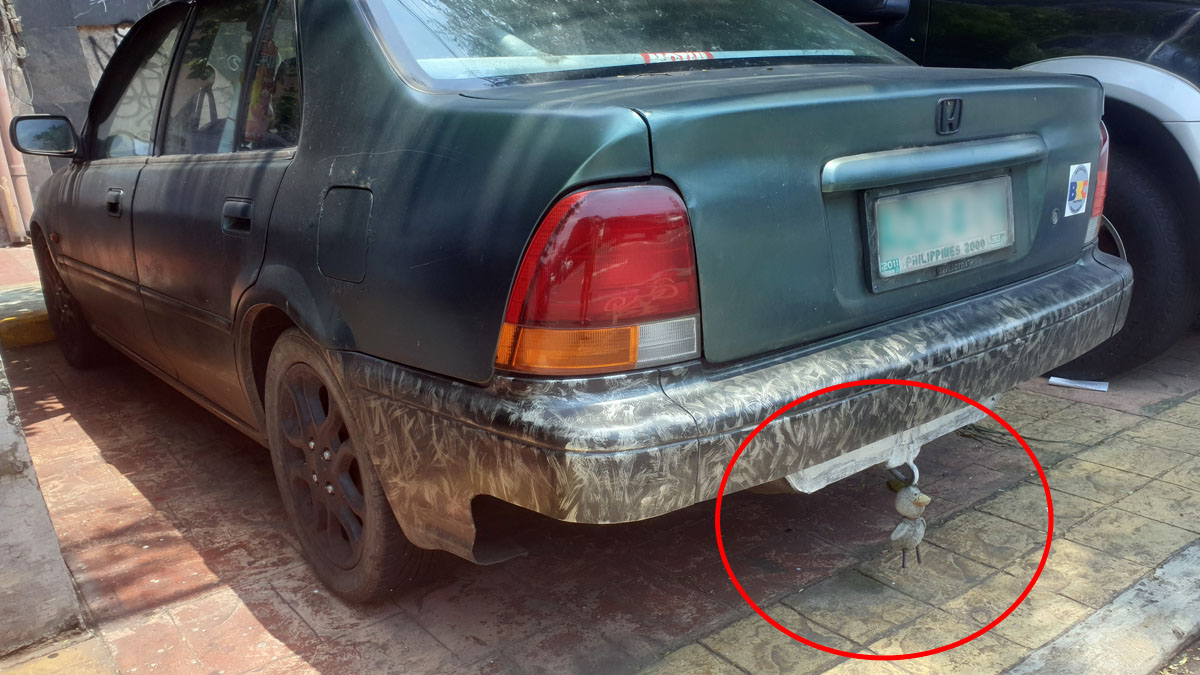
Spend enough time in traffic these days and you’ll begin to notice that some cars sport some strange modifications or accessories attached to them. Some of them are quite whimsical, like the odd stuffed toy hanging from the rear bumper, to downright bizarre like Guy Fawkes masks strapped to the backside of headrests.
These all have their own origins, with some evolving quite a great deal from their original purposes. We go into the strange history of some of them and discuss why they became popular among today’s car drivers
Drift Charm
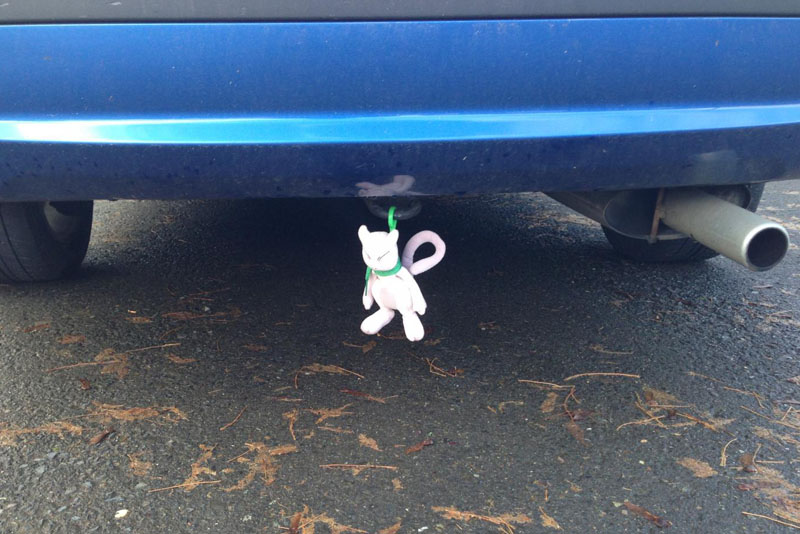
Perhaps the most puzzling of these modifications is the stuffed toy hanging from a car’s rear bumper. These are called drift charms and trace their origins to drifting (the illegal kind done on the streets) in Japan.
Drift charms were first attached by aspiring drift racers to the back of their vehicles to show the extremity of their drifts. Due to the centrifugal forces involved in drifting, the charm is sent whipping out from the back of the bumper when sliding, appearing nearly horizontal and floating from certain angles.
Some argue its origins derive from Bozosoku (Noisy Gang / Tribe) street racers who moved from modifying motorcycles to cars. Instead of purchasing and attaching a proper tow hook (often seen in race cars), they stole grab handles from subway trains and attached them to their cars. Some began changing the circular handle in the strap with a star, heart, or other unique shape. It eventually evolved from a handle to a stuffed toy.
Soon many drivers began attaching similar charms to their vehicles. A cheap and easy modification to do, many others copied, likely not understanding what it was originally for and simply finding it cute. Unfortunately, because of our dusty streets, many of these charms quickly turn grey and require either a regular cleaning or frequent replacement altogether.
Extreme Camber

Chances are, you’ve come across a heavily tuned vehicle with the top of its wheels leaning inward to an extreme degree. This is called extreme camber and it will usually be sported by cars lowered to quite a degree while sporting very wide wheels and low profile tires.
Camber is an aspect of a car that’s regularly adjusted, particularly on race cars. The intention is the ensure the vehicle continues to roll in a straight line and make it less likely to wander left or right. Regular cars sport a camber of 0 to -1 degrees. Race cars on the other hand sport cambers of -3 to -5 degrees. Camber is typically not that extreme because it wears tires unevenly and makes it even more difficult to turn.
Extreme camber was first started in the US by tuners that wanted to lower their car to an extreme degree. They first started by pushing tires outward so that they wouldn’t hit the fenders. However, this was soon outlawed in some states. The new rule dictated that the top of the tire must still be within the top of the fender. To circumvent this rule, tuners began applying extreme camber so that the top of the tire is still within the fender but the bottom half sticks out to show off those wide wheels and tires.
This trend soon took off around the world with many enthusiasts doing the same to have a low slung vehicle with an aggressive look. In car enthusiast circles, this is referred to as "stance" perhaps to compare it to a fighting stance like in some martial arts.
De-chroming

For more than a century, chrome parts on a car (called brightwork) were fitted as standard to give vehicles a luxurious flair. These days, chrome appears to be falling out of favor, now being replaced by blacked out brightwork.
This trend is called de-chroming and you’ll notice it on vehicles that sport black grilles, headlights, trunk garnishes and sometimes even door handles. De-chroming first started with sports cars like the Mercedes-Benz AMG SL65. The brand released an exclusive model called the Black Series, that curiously could be bought in white. Naturally, it was also far more powerful than a regular SL65. It was called Black Series because the brightwork like the grille, lights, and garnishes were all painted a matte black. It was intended to make it look like a stealth fighter jet.
This was soon copied by other brands, releasing their own Black Series / Black Edition of their regular cars, though most of them being purely cosmetic changes. Today, brands like Toyota, Mitsubishi, Ford, Nissan, and Honda now offer cars with the de-chromed look right out of the showroom. Those with earlier cars can also apply the same look by buying grilles, headlight garnishes, mirror caps, and even door handles painted black that easily fit or replace the stock brightwork.
Hood lettering
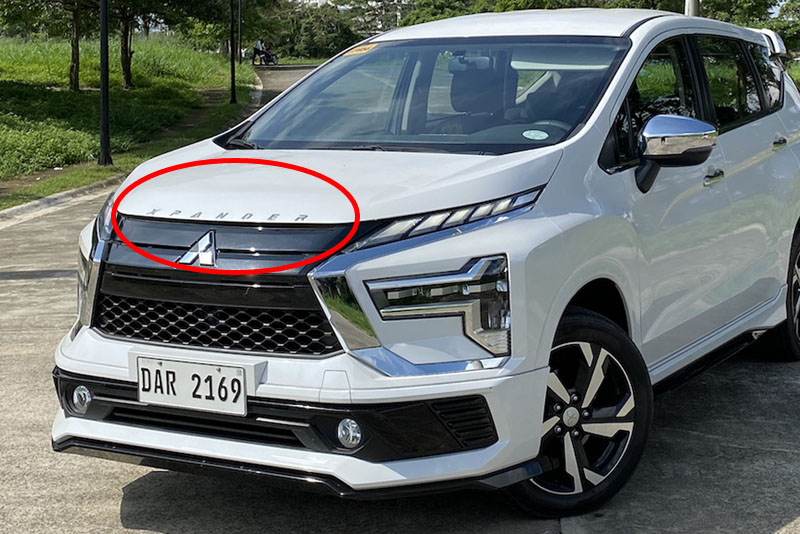
For some time now, vehicles have sported badges at the back bearing the brand and name of the model. Yet a few brands have taken to fitting that same name on the front of the vehicle, particularly the hood. This was first started by the brand, Range Rover, to distinguish its luxury line of SUVs from the standard Land Rovers. Some decades later, Ford did the same to its Explorer SUV, most likely to make it appear like the more upscale Land Rover.
Since then, car accessory makers from Thailand have copied the trend and now offer lettering for nearly all makes and models that drivers can attach to the hoods of their vehicles to make them appear like Range Rovers as well. These are available for popular SUVs like the Fortuner, Montero Sport, and Terra, to even seven-seater family cars like the Xpander.
LED tailgate garnish lights
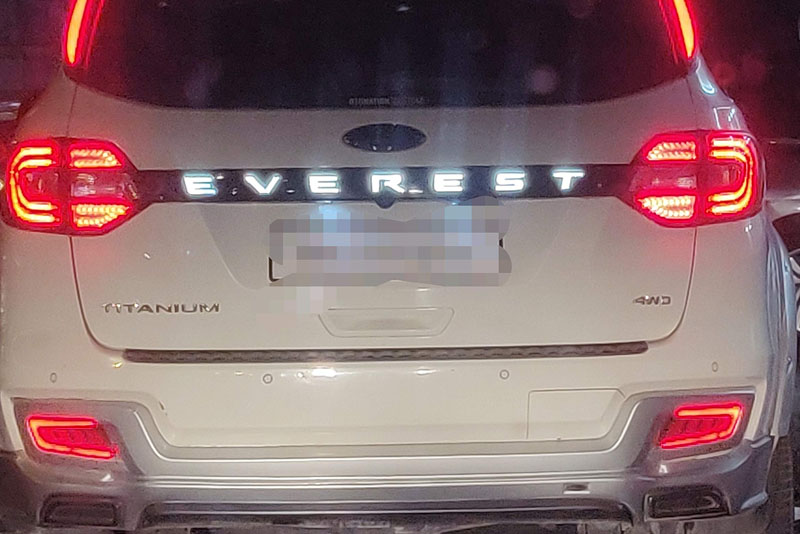
If it’s worth putting in big bold letters, some may argue it’s worth illuminating as well. Illuminated tailgate lettering, usually sourced from Thailand, were soon made available to owners of the same SUVs in order to broadcast to the world what kind of vehicle they were driving.
This modification traces its origins back to the illuminated badges of the 1990s. Gaining popularity around the same time as neon underglow, the illuminated badges came in a variety of colors, however red was the most popular as this was used to make the car look like a performance model, as well as match any underglow or Altezza tail lights (big red circles) that were likely fitted too.

This new incarnation was conceived because SUVs like the Fortuner began putting the name badge across the tail gate garnish. Thanks to the magic of LED lighting, the standard garnish can be removed and replaced with an illuminated version that looks exactly like the stock one during the day. At night however, this lights up the lettering, making it more visible from a distance. Some versions even turn the lettering red when the brake is applied, acting as a fourth brake light of sorts.
Guy Fawkes masks
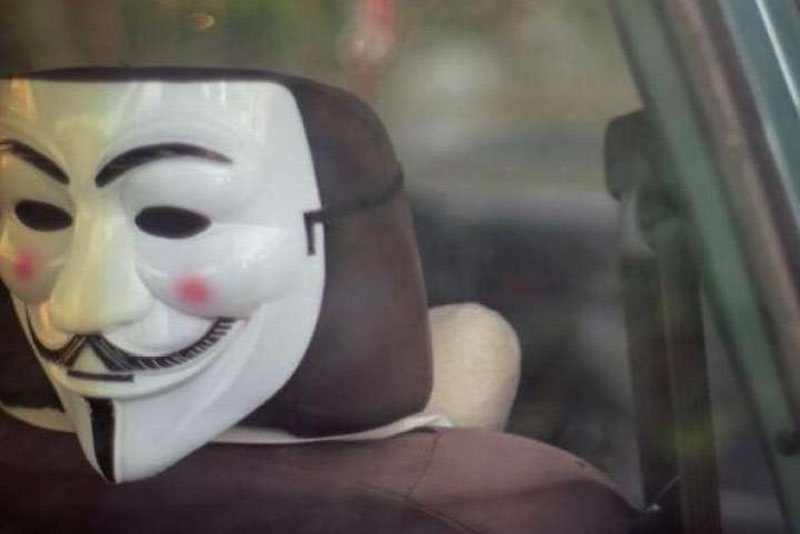
Back in 2005, the film "V for Vendetta" was released, based on a comic book vigilante inspired by real-life French anarchist, Guy Fawkes. Perhaps the most iconic part of the film is the stylized Guy Fawkes mask, distributed to citizens of a dystopian city to stir anarchy and attempt to overthrow its fascist government. Since then, the mask has been adopted by anarchists, the hacker group Anonymous, or anyone that wants to appear rebellious.
Fitting it on the back of cars’ headrests became popular because of the mask’s ghostly white appearance. In some cases, the mask from the movie, "Scream" is used instead. Some also opt for white ski masks.
They were first used in the US and Europe to trick traffic cameras monitoring High Occupancy Vehicle (Carpool) lanes looking for cars with just one passenger. With the mask attached to the front of headrest, the cameras would be fooled into thinking these were actual passengers. As such, some errant drivers got away with using these lanes without being fined.
Locally, these are used for another purpose. To discourage cars behind from keeping their high beams on and dazzling the drivers of modified cars, these masks were fitted to the back of headrests to give the offending drivers a fright and encourage them to turn their high beams down.
JDM Leaf (Wakaba)
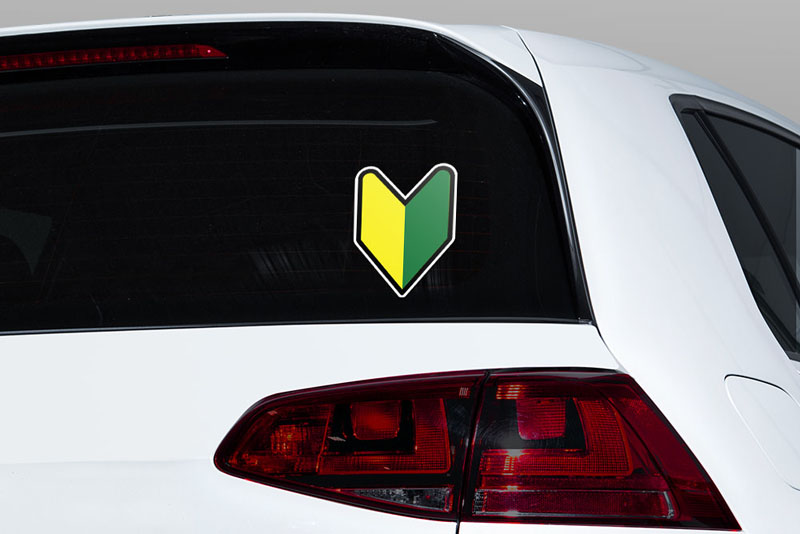
Chances are, you’ve spotted a tuned vehicle with a green and yellow chevron sticker (or orange and yellow teardrop) on the back window. This is called a Wakaba or Shonshisha and is used in Japan to warn other motorists about the driver of the vehicle that has it. It’s not a chevron but is actually is a leaf. The colors are meant to emulate a young leaf (yellow and green) and an old leaf (orange and yellow), to visually show the driver’s age.
The JDM leaf is the equivalent of the “Warning: Student Driver” or “Warning: Elderly Driver” sign and is meant to warn others that the driver is erratic and possibly a danger to others. So keep distance. Like many of these trends that were lost in translation, foreign tuners likely saw the cars of these young drivers that were heavily modified and copied everything onto their car, including the sticker, to give their vehicles a JDM (Japanese Domestic Market) look, and make others believe they had imported their vehicle straight from Japan rather than purchased from a local dealership like everyone else. Chances are, some tuners are aware of what these stickers mean but nonetheless keep the them to maintain an authentic JDM look.
These are some of the most popular car trends to date. If you’ve ever wondered why or how some of them caught on, we hope these explanations have managed to enlighten you.